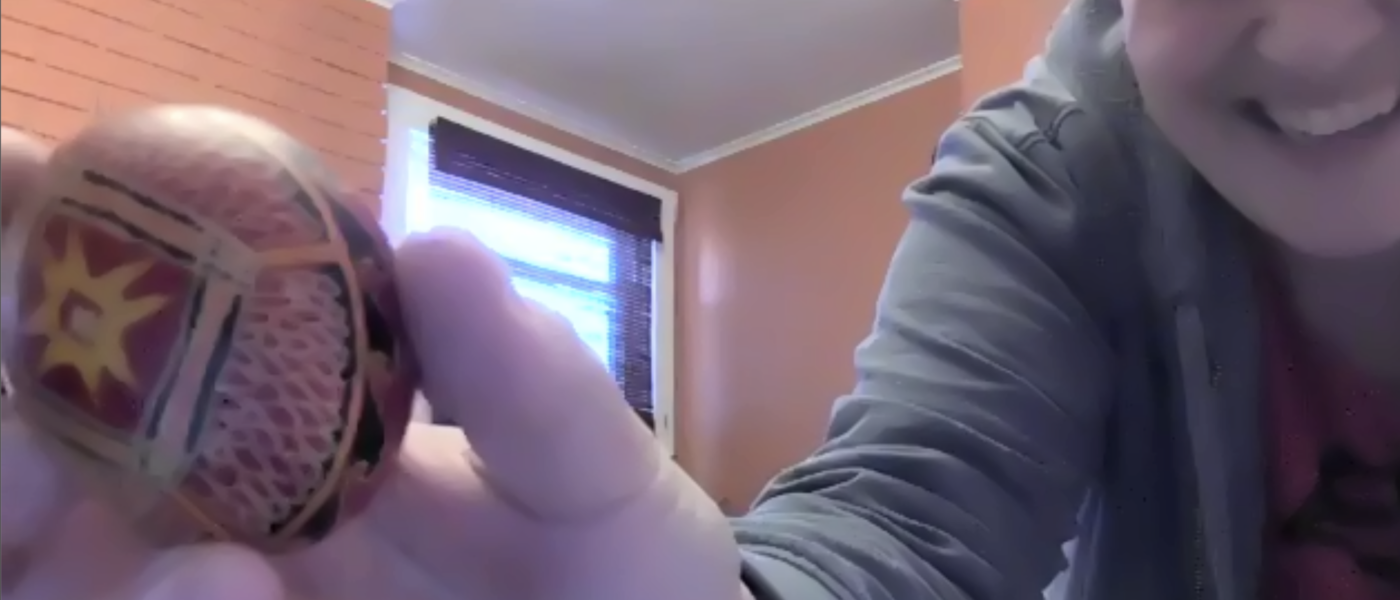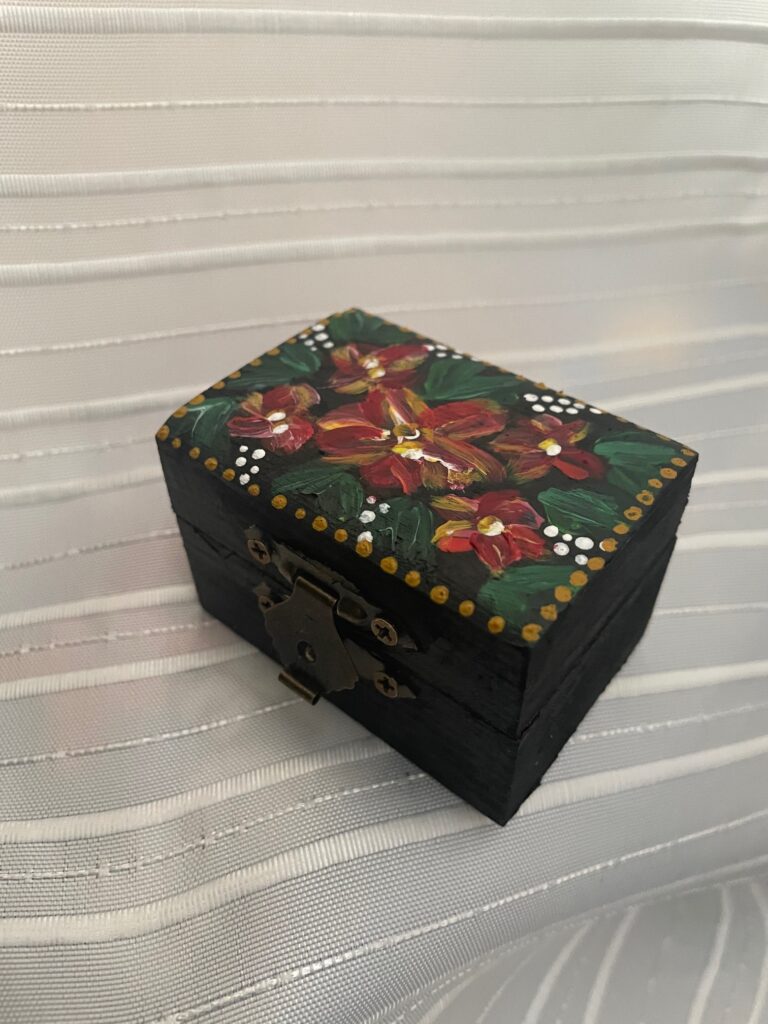Virtual Crafting: Boosting Creativity While Building an Online Community
By Olga Klimova, University of Pittsburgh, Molly Peeney, University of Pennsylvania, and Shannon Donnally Quinn, Michigan State University
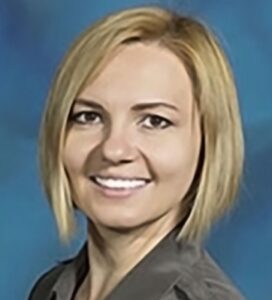


DOI: https://www.doi.org/10.69732/TYWW7323
When COVID-19 hit, many of the hands-on workshops that we conduct as extracurricular activities with our students were put on hold. But the creation of art is needed more than ever in such times of isolation and uncertainty. In this article, we talk about ways that we created opportunities for students (and others) to still participate in some of these hands-on extracurricular events, in order to boost creativity as well as build a virtual community.
A Series of Virtual Folk Art Workshops (Olga Klimova)

At the University of Pittsburgh, we have established a very strong partnership with a local high school – Pittsburgh Brashear High School. The Brashear students regularly participate in our annual ACTR Olympiada of Spoken Russian and in the STARTALK Russian Summer School. Because of the pandemic, both the Olympiada (scheduled for April 2020) and The STARTALK program (scheduled for June-July 2020) were canceled. To stay involved with our partnering school during rough times and to support the Russian teacher at the Brashear School, the Department of Slavic Languages and Literature and the Center for Russian, East European, and Eurasian Studies collaborated and developed a series of Russian folk art workshops during the spring semester of 2021.
We invited the Pittsburgh-based Russian artist, Yelena Lamm, to lead these workshops due to her extensive training in and experience with not only painting in general, but also with painting on wood specifically. Prior to relocating to the US, she ran a small business painting Russian souvenirs – matreshka dolls, wooden spoons, brooches, jewelry boxes, and many more, using traditional folk art techniques. Due to the virtual format of our art workshops, we could have recruited an artist from any part of the world; however, it was very beneficial for us to establish this connection with the local artist as, after the pandemic, we may be able to continue our collaboration with her at face-to-face workshops and events.
We made these workshops open not only to Brashear High School students, but also to the students, staff, and faculty from the University of Pittsburgh, Carnegie Mellon University, Pittsburgh local community, and anyone else, as we advertised our workshops publicly through social media. We had between 8 and 14 people on average participating in each workshop. The participation decreased at the end of the semester a couple of weeks before finals week.
This series was running for one hour once a month during the lunch break from 12-1pm for four months. To eliminate the high cost of the workshops and to make the distribution of art supplies easier, we opted for the same medium and the same types of paint for all the workshops – painting with acrylic paints on wood. We chose four traditional Russian folk art forms – a matreshka doll, a wooden spoon, a wooden jewelry box, and a wooden Easter egg. We distributed the art kits among the interested participants in person a few days before each workshop, and included links to the specific art supplies on Amazon, Michaels, or Joann’s with our flyer for non-local participants. We also distributed wood varnish to the local participants to protect the artwork; however, we had to explain that the participants needed to apply it later on their own after the paint was completely dry. The center funded the art workshops at a total cost of $300. This covered 40 kits for 4 workshops, so the cost came out to less than $2 per participant per workshop. Even though there was a strong interest among some participants to record these sessions, we had to opt out of recording as we had minors participating in the workshops, which would require additional permissions and waivers.
We conducted these workshops through Zoom, and the artist used both her laptop and her phone cameras to provide two different perspectives. As one of the goals of these art workshops was to introduce high school students and college students to Russian folk culture, each wooden project was painted in a different Slavic folk art technique – khokhloma, gzhel’, palekh, and malevanki. The artist briefly introduced each art form in the beginning of the workshops by demonstrating examples in front of her camera or by showing slides with images. When the artist started the demonstration of the art techniques, she used her phone camera. Her phone camera, set to a non-mirrored view, provided a bird’s-eye view of her workspace, which allowed participants to recreate the same brush strokes, lines, and patterns as they were demonstrated on the screen.
During the sessions, the participants asked questions about art techniques, consulted about patterns and colors, and showed their work in progress. We concluded our sessions by all participants displaying their projects in front of their cameras and taking screenshots. The atmosphere was very relaxing and welcoming. These art workshops not only introduced the participants to traditional folk art styles, but also helped to form a bond among high school students, college students, secondary teachers, college instructors and staff, and community members. As art can be a very effective way of overcoming stress, anxieties, and depression (“Art Therapy Benefits for Anxiety & Stress at Work”), during the pandemic, these art sessions have provided participants with an opportunity to relax in the middle of a busy, stressful work day. This was a very positive experience, and we are planning to repeat these art series in the future either in a face-to-face format or in a hybrid mode.


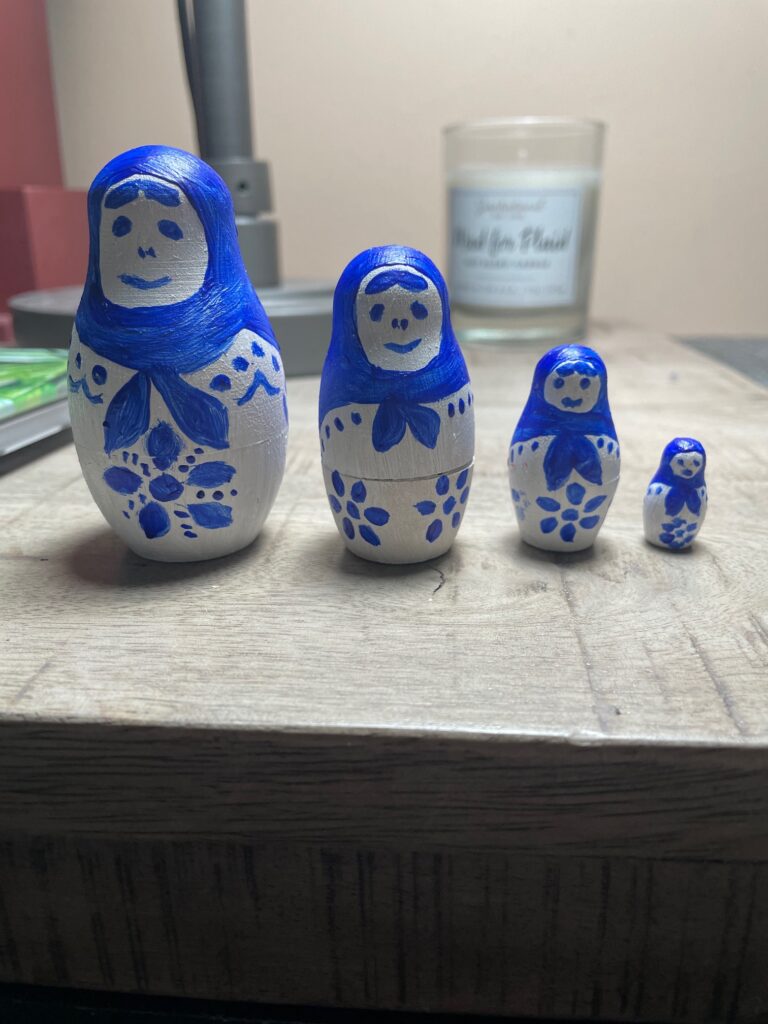
Picture 4 – The final product for the gzhel’ wooden matreshkas |

Picture 5 – The final product for the khokhloma wooden spoon |
|
|

Picture 7 – The final product for the wooden Easter egg |
Ukrainian Easter Eggs (Shannon Donnally Quinn and Molly Peeney)
During a usual COVID-free school year, I (Shannon) usually invite students to come over to my house to decorate Easter eggs using Ukrainian traditional methods and tools. When COVID-19 necessitated the cancellation of the face-to-face event and students were scattered all over the state and country, I considered doing an online event. Molly wanted to attend as well, so we decided to try holding a joint Michigan State and Upenn event online.
We decided to experiment with having participants learn about the process before the session itself. Because making Ukrainian Easter eggs requires a significant amount of setup, I created a short lesson in H5P (embedded below) that had photos, text, and audio outlining how to order the needed supplies, how to prepare the eggs and dyes, and the main steps for the decorating of eggs.
We first advertised the event to our students, but people from other walks of life expressed interest in participating, so we opened it up to anyone. Participants registered via Zoom and were sent an email with the link to the website and relevant information.

Participants were responsible for purchasing their own supplies and we recommended a starter kit that cost about twenty dollars. We didn’t anticipate that our participants would create a run on Ukrainian Easter egg kits, but it happened! The registration numbers for our event were not huge, but they were large enough that the store where we had encouraged them to buy the supplies ran out of the kit that we had been recommending. We were able to update the website and suggest alternative products.
Both of the hosts decided to connect to the Zoom meeting with both a computer and a phone. The computer would show each host’s face, and the phone was set up on a tripod aimed at the table to show how the eggs were being made. During the session, we let participants know that they could “pin” any video of their choice to keep it highlighted on the screen.

The activity turned into a fun intergenerational event. The people who joined were students, family members, colleagues, and longtime friends. Some participants joined on their own, while others were able to enjoy the event along with other members of their own household, which made it in some ways more of a hybrid event. Several children participated, and there were people from all over the world. We started by introducing ourselves, and then we briefly went over the steps for decorating the eggs. After that, everyone worked at their own pace, asking questions, sharing tips, and showing off their creations.
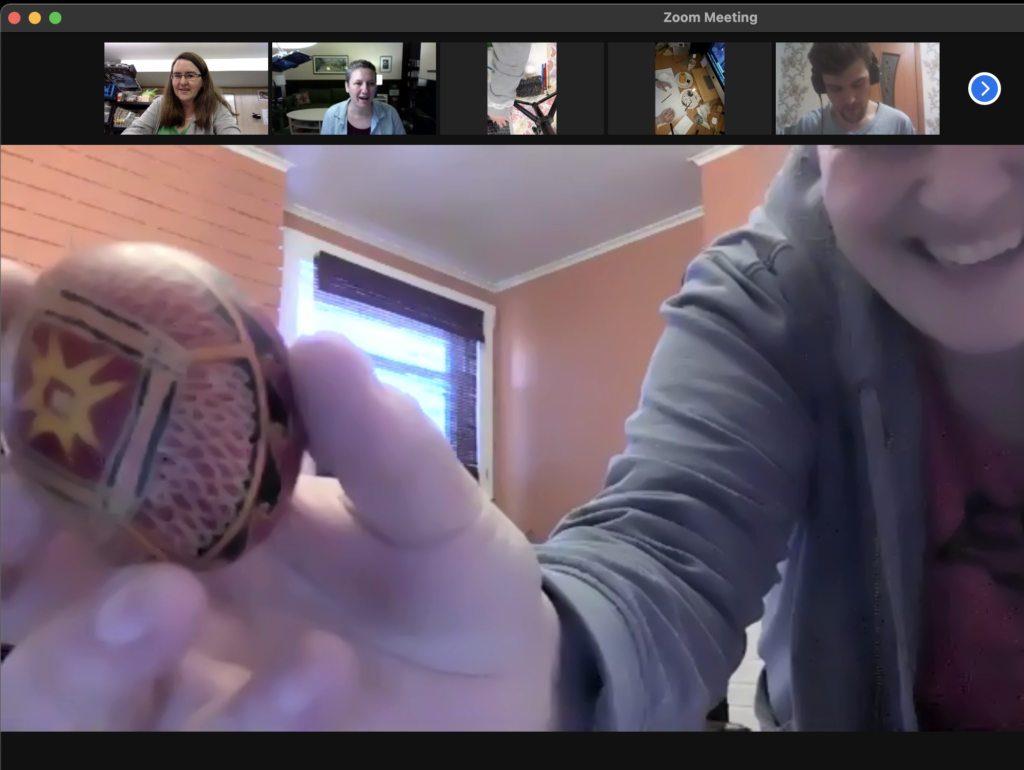
We did have everyone hold up their eggs to the cameras towards the end of the session and take a photo, but one idea to extend this, especially if you do this as a more official class activity, is to create a “virtual exhibit” where students post photos of their creations after the end of the crafting session, perhaps on a Padlet. After the event, both hosts received positive feedback about the event, including a request to hold a similar event next year and connect it to the celebration of Maslenitsa. A few people thanked us for posting about the event even though they didn’t attend, because it prompted them to buy supplies and try making eggs on their own.

While we do hope that in the near future we will be able to return to hosting in-person events for students, we are considering hosting a hyflex (in-person and virtual) event in the future to further develop connections between the Russian programs of our respective universities. We may try to foster connections with immigrant communities in the U.S. as a way to develop program-relevant community outreach. Virtual events such as these allow people who might not have ever had the chance to learn about traditional crafts, and students participate in an intergenerational activity that becomes an additional entry into the culture.

